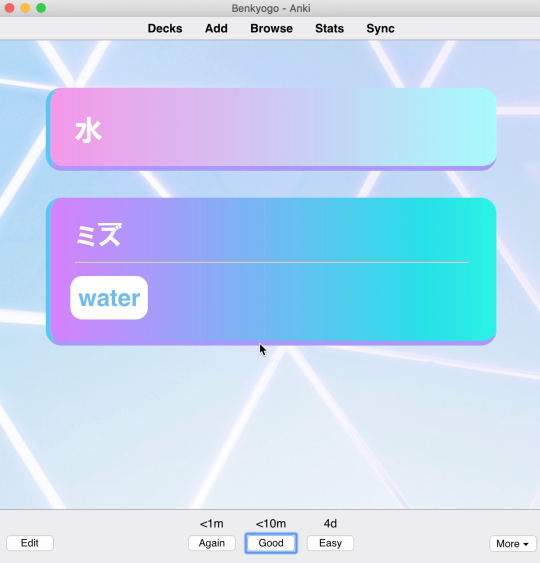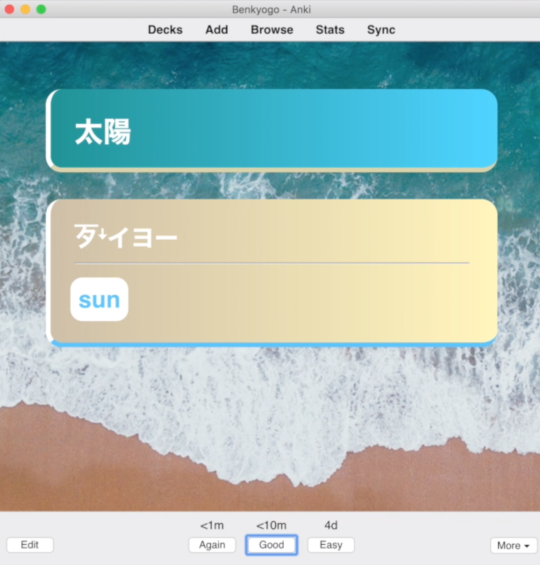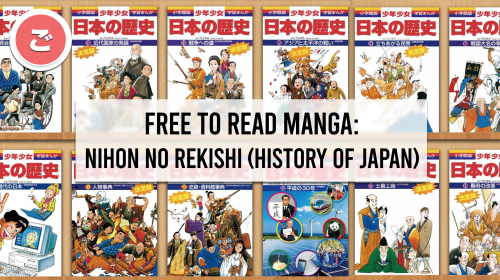#hintsandtips
Due to the long school closures in Japan, the publisher of the famous kid’s educational manga 日本の歴史(nihon no rekishi, History of Japan) has made all 24 volumes available to read for free online until August 31st, 2020!
Check out the manga for free via this link! You can also read the press release here.
Nihon no rekishi is essentially set of history books - they introduce children to Japanese history from past to present. The books are aimed at children - so plenty of easy-to-understand scenarios and furigana abound!
Be sure to check out a few volumes before they’re all gone!
- - - - - - - - - - - - - - - - - - - - - -
⛩ Visit Benkyogo.co.uk for more ways to learn Japanese
Benkyogo Store: https://www.etsy.com/uk/shop/Benkyogo
Post link

Check out the accompanying YouTube video here for detailed instructions.

I’ve been using Anki for over 10 years to study Japanese. It’s one of the best ways to learn and remember vocabulary, especially when everything starts to look the same…
I have created a Copy & Paste CSS code to use with your Anki decks. It is fully customizable, using the this gradient generator. You can find high quality, free stock images here on Pexels. You can see a quick video of the template working on the Anki app here.
DOWNLOAD FREE CUSTOM CSS HERE!

Check out the YouTube video for detailed instructions and more!
Have fun customizing, creating, and most of all - learning!!

Folllow Benkyogo on YouTube!
⛩️Check out the Benkyogo Store!
Welcome to Benkyogo!
- - - - - - - - - - - - - - - - - - - - -
Links mentioned in this video
Read the blog post here: https://tinyurl.com/yc42l87a
- - - - - - - - - - - - - - - - - - - - - -
⛩ Visit the Benkyogo blog for more ways to learn Japanese!
https://www.benkyogo.co.uk/

Check out the accompanying YouTube video here. Make sure to look at all the key vocabulary at the end of this post.
On Episode 1 of the Writing Business Japanese Series, we’re looking at how to ask for a quotation. This email can be used and adjusted when you’re looking to get a quote for a certain number of products from a company who you have been in touch with in the past. If it’s the first time emailing, be sure to introduce yourself!
Let’s take a look at the mail in full.
Subject: お見積もりのお願い
山田 様
いつもお世話にっております。
早速ですが、弊社では新たな製品の購入を検討しております。
つきましては、下記の内訳でお見積もりをいただければ幸いです。
記
品名:〇〇
数量:〇〇個以上
お手数ですが、本日中にお送りいただければ幸いです。
お忙しいところ恐縮ですが、よろしくお願いいたします。べんきょうご
Now let’s look in a little more detail.
Subject: お見積もりのお願い
The subject line should be short and sweet. In this case, ‘request for a quote’.
いつもお世話にっております。
This literally means something like “You’re taking care of me”, but in business terms it’s a standard greeting. “ーておます” is used here, which indicates this is a business relationship that is already established. If you are making a new connection, it is sometimes better to say ‘お世話になります’.
早速ですが、弊社では新たな製品の購入を検討しております。
The next sentence is “Sorry for getting right to it, but we’re considering purchasing some of your new items.” The key word here is 早速ですが, which is a way of indicating that you are about to jump right into the main topic of the email.
つきましては、下記の内訳でお見積もりをいただければ幸いです。
記
品名:〇〇
数量:〇〇個以上
The recipient needs to know what they’re quoting for, so you have to give them an itemized breakdown (内訳). By using ‘下記’, you’re saying that you want a quote for the following. When using 下記, you must follow the sentence by starting a list with ‘記’, otherwise the person doesn’t know where to look. So literally, “I’d like a quote with the breakdown as follows, below the 記’
お手数ですが、本日中にお送りいただければ幸いです。
You can include a deadline. Although お送りいただければ幸いです sounds like a tentative deadline, it’s always best to just follow the deadline, and apologise if you can’t make it. Remember, Japanese people aren’t often direct when making requests…
お忙しいところ恐縮ですが、よろしくお願いいたします。
The final keyword is ‘恐縮’ - this means ‘I’m terribly sorry’ and is used frequently at the end of business emails to politely say sorry for taking up the recipient’s time.
KEY WORD LIST
お世話になる: I’m indebted to you
早速 sudden
弊社 our company (formal)
新たな new
製品 product
購入する purchase
検討する considering
下記 the following
内訳 itemized
幸い appreciative
品名 product name
数量 quantity
以上 that’s all
お手数ですが、 sorry to trouble you,
本日中 within today, by the end of today
お忙しいところ while you’re busy
恐縮 sorry
—————
Folllow Benkyogo on YouTube!
⛩️Check out the Benkyogo Store!

